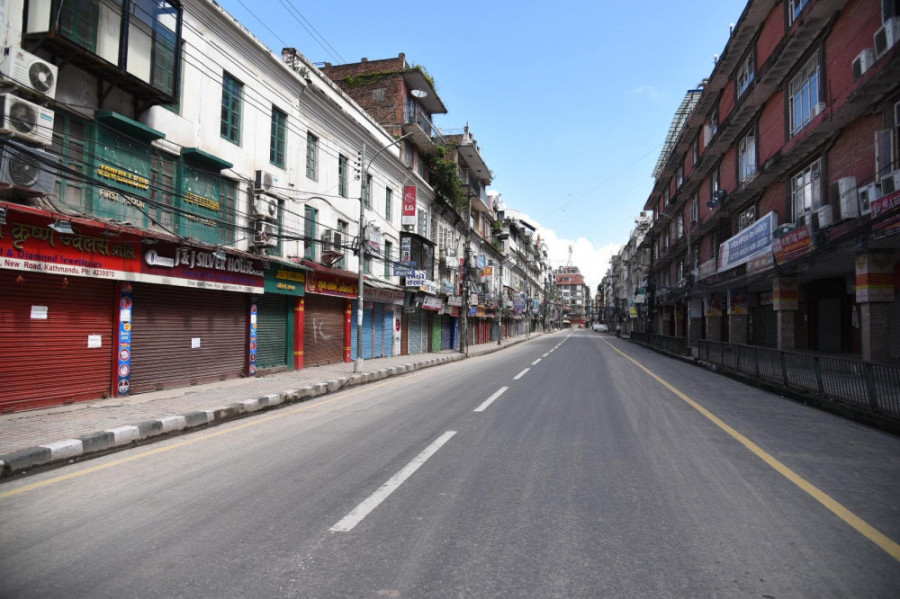Columns
Show me the numbers
Nepali news organisations have been underwhelming in their approach to data analysis. This has been particularly worrisome during a deadly pandemic.
Amish Raj Mulmi
As a people, we love rituals, be it Indra Jatra rites or the everyday rounds of temples in the morning. A new ritual has now imprinted itself on our minds. This one occurs every evening around 4 pm, when the Health Ministry spokesperson reads out new Covid-19 figures for the day. We wait with bated breath, keep our fingers crossed, and mentally compare the numbers to the previous day.
The Nepali media has latched on to this daily ritual with a finesse. As the numbers are announced by the spokesperson, I can imagine a reporter diligently filing their copy, repeating the ministry’s words, but little else. The news reports are all predictable: new cases, total PCR tests in the last 24 hours, and those who’ve been discharged. On most news sites, there is a tally of the total number of cases, fatalities and global caseload. But what about the weekly rise in cases? A month-by-month comparison? Which districts have reported new infections? How many cases in each district? What is our recovery rate? And are we going through a second wave, or is the first wave still ongoing? What sort of statistical inference can we pull from the data? And can we tell stories about Nepal’s experience with Covid-19 through the numbers?
This pandemic is probably one of the most closely watched events by statisticians across the world. After all, rarely have such volumes of data been generated around a single event which stretches across time and space. Public interest is equally high; numbers matter more than ever. But here in Nepal, it is perplexing that little to no analysis of the pandemic exists in the public domain.
Ideally, every newsroom needs a numbers person, someone who can cut through the clutter to deliver precise data analysis and interpretation—not just of Covid-19, but of GDP, maternity health indicators, rise in foreign employment and remittances, number of students studying abroad, and tourist arrivals and departures. For example, the Finance Ministry expects the GDP to grow by 7 percent this year, but the World Bank projects the growth at 1.8 percent. What explains the disparity? Which figure should we trust?
Ten years ago, when I worked in this paper’s newsroom, it was difficult to find someone adept with numbers (admittedly, we may not have searched hard enough). It’s surprising, however, that Nepali newsrooms have not yet internalised the importance of data-driven reportage a decade later.
To me, such neglect is symptomatic of a larger malaise. It is partly social; we do not value numbers as a society. Math and the sciences are a pedagogical hurdle to overcome, unless one wishes to become an engineer. Part of it is systemic. Our governments have always been opaque, and digging into numbers is the easiest way to pin down governments. It’s therefore much easier to not release data, and anybody looking into numbers in Nepal knows how difficult it is to get even basic information. Part of it is also a weak orientation towards data, the lack of ability to absorb the numbers and go beyond just what a ministry, organisation or policymaker says, to run the numbers in one’s mind and imagine what they mean beyond the surface. Publishers have never invested in such specialisations to begin with. And part of it has to do with society’s outlook towards data and science which, by extension, defines how our media internalises and presents evidence-based reason, or counters false claims made by public figures.
Columnists usually hesitate to present a critique of the media—‘biting the hand that feeds us’ et al. But more than five months into the pandemic, it is extraordinary that one needs to dig deep into the ministry’s website to find a simple daily progression chart. Further, individuals or volunteer groups have done a basic analysis of the pandemic in Nepal by themselves. Imagine what could happen if these individuals had newsroom resources at their disposal?
This is not to say the media isn’t trying; there have been a few reports in this newspaper and others that have tried to tackle the numbers. But on the whole, the Nepali media’s Covid-19 reportage has been lacking in hard data analysis from the very start. As I said, the issue is systemic; our newsrooms are oriented more towards reportage, and less towards analysis. Both need to run together. Journalists have to be immersed in a daily news cycle while taking the long view of an event. Here, the publisher is equally responsible; unless they invest in such journalism, it is unlikely the reader will get any. Publishers need to hire individuals who specialise in such analysis to deliver a clearer picture. The media certainly faces fiduciary pressures, but journalism has to evolve as well. Reporting verbatim without cross-verifying and analysing reduces the media to being megaphones; they may amplify the information, but it does not achieve much else.
There have been numerous observations about how the Nepali media remains the most effervescent in all of South Asia, especially if one considers its role in fomenting revolution and bringing change. But as erudite the Nepali media and the commentariat is towards political issues, it is yet to extend the same vocabulary to other spheres of our society. This gap in our outlook is visible best in the current pandemic, when reports are filed like a rite, but little else is offered.




 5.15°C Kathmandu
5.15°C Kathmandu















